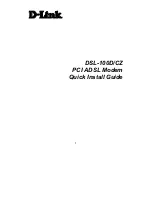
6
6193-3201
Chapter One
INTRODUCTION
The RM-90 Wireless Ethernet module provides wireless connections between Ethernet
devices or Ethernet wired networks (LAN’s). It has an internal 900MHz spread spectrum
frequency hopping wireless transceiver, which can be used without a radio license in
many countries.
The RM-90 has a standard RJ45 Ethernet connection which will operate at up to
100Mbit/sec. The module will transmit the Ethernet messages on the wireless band at up
to 200 Kbit/sec.
1.1 Network Topology
The RM-90 is an Ethernet device, and must be configured as part of an Ethernet network.
Each RM-90 must be configured as:
… an “Access Point” or a “Client”, and
… a “Bridge” or a “Router”.
You can also connect to the RM-90 via a
RS-232 or RS-485 serial port using PPP
(point-to-point) protocol. PPP allows the
RM-90 to connect serial communications
into the Ethernet network.
Access Point vs Client
The Access Point unit acts as the
“wireless master” unit. The Access
Point sets up the wireless links
to the Client units, and controls
the wireless communications. The
first diagram shows two Ethernet
devices being linked. One RM-90
is configured as an Access Point and one as
a Client – in this example it doesn’t mater
which unit is the Access Point.
The second diagram shows an existing LAN
being extended using RM-90’s. In this example,
the Access Point should be configured at the
LAN end – although the wireless link will still
work if the Client is at the LAN end.
An Access Point can connect to multiple
Clients. In this case, the Access Point should
be the “central” unit.
6XXZhh
Ed^ci
8a^Zci
:i]ZgcZi
9Zk^XZ
6XXZhh
Ed^ci
A6C
8a^Zci
:i]ZgcZi
9Zk^XZ
6XXZhh
Ed^ci
A6C
8a^Zci
8a^Zci
8a^Zci
:i]ZgcZi9Zk^XZ







































